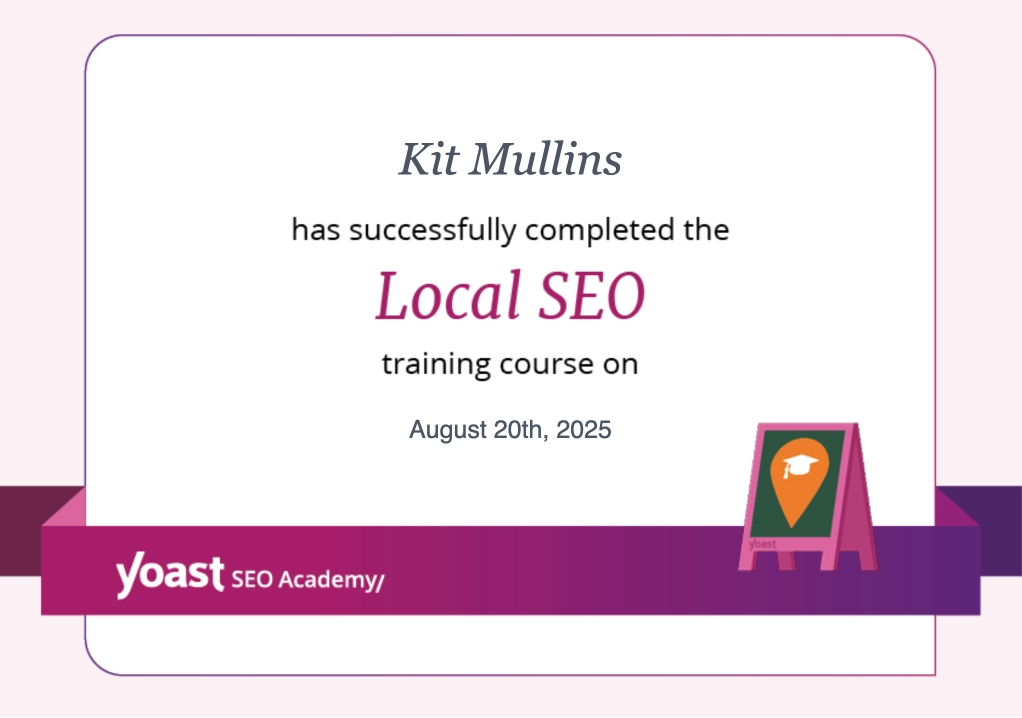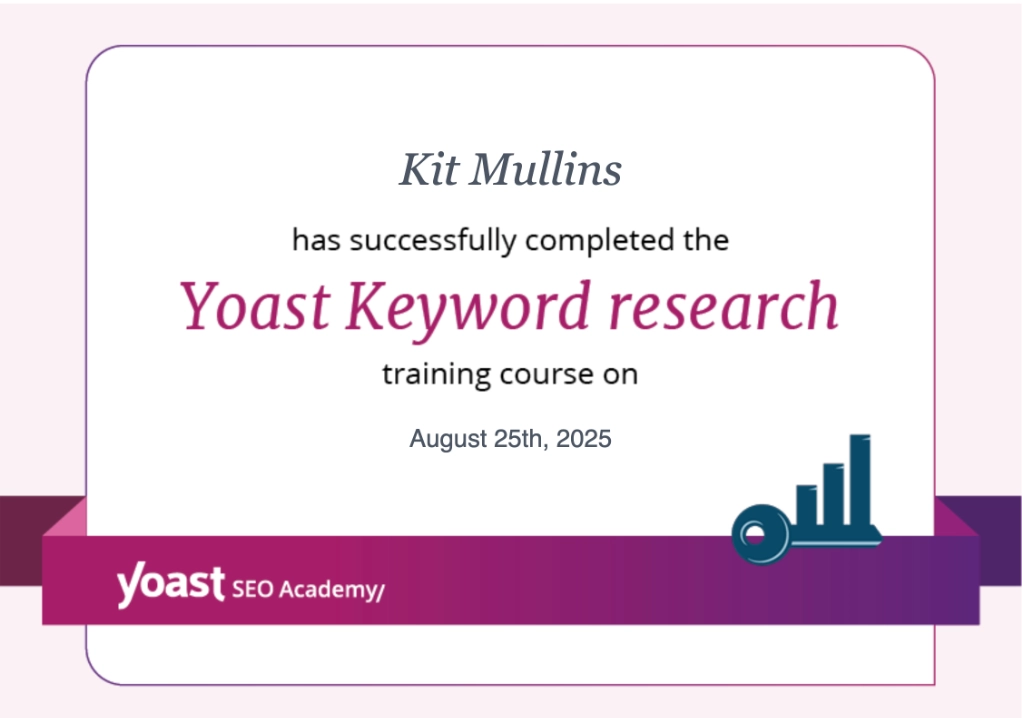About the Author
Jordan Fuller is a retired golfer and businessman. When he’s not on the course working on his own game or mentoring young golfers, he writes in-depth articles for his website, Golf Influence.
We all know that golf and business go hand in hand. But did you know that you can use principles from the sport – including golf psychology – to improve your business decision-making?
Golf is about much more than just swinging your clubs. When you really get down to the core of it, golf is about mental resilience, focus, and the ability to make smart decisions in pressured situations.
In the business world, these traits set you apart. So next time you’re on the golf course, remember that you’re also using valuable golf psychology to improve your decision-making, focus, and cognitive skills. Here’s how.
At first glance, golf and business might seem worlds apart, even though business is done on the golf course so often! But dig a little deeper, and you’ll find that they’re a lot more similar than they initially seem… And both build on the foundations of problem-solving and decision-making.
As a golfer stands on the tee, he needs to decide on how to play the shot. Likewise, business people need to strategize smartly in order to forge ahead. Both require effective pressure management, smart strategy, and capitalizing on opportunities.
In golf, each shot requires a bit of strategic thinking, from tee to green. You need to think a few moves ahead, factoring in things like wind, terrain, and course hazards.
Business isn’t all that different. Leaders need to think strategically about each deal every step of the way. Factors to keep an eye on include market trends, what the competition is doing, and potential risks.
On the golf course, you’ll inevitably come up against risk/reward shots. Here, you’ll need to choose between playing it safe or taking a risk that could either lead to an even greater reward or to losing a ball.
In business, you need to weigh up the pros and cons of each move, whether it’s an investment opportunity, a potential new partnership, or budgeting. Do the potential returns outweigh the risks?
Golfers need to continuously work on their game if they want any hope of improving their handicap. This might involve investing in coaching, practicing often, and getting feedback on their swing.
Similarly, business people should be constantly striving to get better at what they do. Learning new things, honing existing skills, and being open to feedback are essential to improve.
Golfers can’t let one bad shot ruin their whole round. Business people can’t let one failed deal ruin their flow. Both golfers and business people need to be able to handle setbacks with mental strength.
Both becoming a better golfer and becoming a better businessperson require effort and patience. Building a good handicap and building a business take constant work.
On the golf course, you’ve got to choose every golf club carefully based on the shot you’re taking. In the business world, it’s all about allocating resources intelligently, whether it’s capital, time, or manpower.

Golf isn’t called a gentleman’s game for nothing. Golfers are expected to be honest about their scores and follow the rules even when nobody else is watching. In the same vein, companies are expected to maintain ethical standards, be transparent, and act with integrity.
Things can change fast on the golf course. Golfers need to be able to adapt to sudden challenges, like wind, other weather, or unexpected hazards. In business, being able to adapt and pivot is crucial in the case of sudden changes in the market or unexpected challenges.
Golf psychology is all about optimizing your mental state to boost your performance on the golf course. While there is some physical aspect to the game, it’s largely about mental toughness, focus, and resilience. It comes down to a few key factors:
Did you know that Oprah Winfrey credits a lot of her business success to visualization… a secret she learned from sports psychology? And she’s not the only business leader who’s used sports-related psychology to get ahead in their field. Here’s how to apply golf psychology to business and start seeing your own success.
Golfers know that you can’t sink a putt when you’re distracted. And businessmen know that you can’t close a deal if your mind is somewhere else. Distracted decisions lead to missed putts… Or lost deals. Boost your concentration by:
Mindfulness is all about being mentally present in the moment. It ties in closely with focus—being able to silence all distractions and focus on what you have to do in the moment. Use mindfulness to your advantage by:
Some golfers have a pre-shot routine; a little shuffle, a tap on the ground, a shake of the head. It might be more mental than physical on the course, but in business, having a pre-decision-making routine can be invaluable. It may include:
Whether you’re heading to the course for a round or going into the boardroom for a business meeting, having clear, defined goals is the foundation for success. Here’s how:
Ready to start putting your golf psychology to good use in the office and not just on the course? Use this as an excuse to get out on the golf course more often if you like, but don’t just swing away without thought or consideration. Consider the psychology of the game carefully and take those skills from the fairways to the boardroom to boost your business decision-making skills.
In an era where change is the only constant, digital marketing is no exception to the rule.
As businesses all over the globe embrace this virtual era, the realm of marketing has also experienced a paradigm shift. Today’s discerning consumers demand more than just products or services; they seek an exceptional experience that is customized, convenient, and value-driven.
The challenge for businesses, then, is not only to fulfill these expectations but also to anticipate them.
That’s where the power of foresight comes into play.
Foresight in digital marketing is the ability to predict and prepare for future trends, challenges, and opportunities. It acts as an invisible compass, guiding marketers toward sustainable success while avoiding potential disasters.
This article explores how the implementation of strategic foresight in digital marketing can ensure business resilience and customer delight.
Strategic foresight, an innovative business discipline that has grown in popularity over the last two decades, refers to the systematic anticipation and preparation for future trends, opportunities, and challenges.
Essentially, strategic foresight involves a shift from reactive decision-making to proactive planning, bridging the gap between the present and the future.
The Global Strategic Foresight Community established in 2014 recognized its importance as a tool for long-term planning, risk management, and opportunity recognition. This community emphasizes the use of strategic foresight to anticipate changes in the business environment, allowing organizations to pivot or innovate effectively.
Strategic foresight is particularly beneficial for companies operating in rapidly evolving sectors such as technology, healthcare, and eCommerce. It aids them in staying ahead of the curve by spotting emerging trends and potential disruptions early on.
Businesses spanning industries—from tech giants like Google and Apple to consumer goods companies such as Procter & Gamble—have all integrated strategic foresight into their planning and decision-making processes.
Even small businesses and startups are starting to see the value of this approach, as it equips them with the tools to navigate uncertainty and shape their future.
With its critical role in facilitating resilience and innovation, strategic foresight is transforming the way we approach planning and strategy in the 21st century. It arms businesses with the capacity to:

There are several key approaches to utilizing strategic foresight to avoid marketing disasters and ensure customer delight:
One of the most effective approaches to avoiding marketing disasters is by prioritizing a customer-centric mindset. This means understanding your target audience, their needs, preferences, and pain points.
By conducting thorough market research, engaging in customer feedback mechanisms, and leveraging data analytics, you can tailor your marketing strategies to align with customer expectations. This customer-centric approach reduces the risk of misalignment, enhances customer satisfaction, and minimizes the chances of a marketing disaster.
For example, Shopify integrations provide businesses with robust data analytics capabilities, including customer segmentation, purchase behavior analysis, and demographic insights. By utilizing these tools, businesses can conduct thorough market research and gain a deeper understanding of their target audience.
Horizon scanning is a vital component of strategic foresight in digital marketing. It involves systematically monitoring the external environment to identify emerging trends, technologies, and societal shifts that could impact your industry or target market.
By staying ahead of the curve, you can proactively adjust your marketing strategies and capitalize on emerging opportunities while avoiding potential disasters.
Horizon scanning techniques include:
Scenario planning is a powerful tool for envisioning alternative futures and their potential implications. It involves developing multiple plausible scenarios based on different assumptions and drivers of change.
By exploring these scenarios, businesses can identify potential marketing disasters and devise strategies to mitigate their impact. Scenario planning also helps in identifying emerging customer needs and developing innovative solutions to meet them.
To enhance your foresight capabilities, it is essential to involve cross-functional teams and stakeholders in the process. Collaborative foresight brings together diverse perspectives and expertise, enabling a holistic understanding of potential risks and opportunities.
By involving representatives from marketing, product development, sales, customer service, and other relevant departments, you can uncover blind spots, challenge assumptions, and develop more robust strategies. This collaborative approach fosters a shared understanding of the market landscape, aligns organizational goals, and reduces the likelihood of marketing disasters.
Despite the best efforts, unexpected crises may still arise. To mitigate the impact of potential marketing disasters, it is crucial to have a crisis preparedness plan in place. This plan should outline the steps to be taken in the event of a crisis, including communication protocols, crisis response teams, and contingency measures.
By anticipating potential crises, preparing response strategies, and conducting simulations or drills, you can minimize the damage caused by unforeseen events. A well-prepared crisis response plan helps you maintain trust, transparency, and credibility with your customers, even during challenging times.

In today’s volatile digital marketing landscape, foresight is no longer a nice-to-have; it’s a must-have. Implementing foresight in your digital marketing strategy can help avoid potential marketing disasters and delight your customers with unmatched experiences.
It is important to remember that foresight doesn’t guarantee certainty. However, it provides a lens to view potential futures, giving you the best chance to navigate your way to success. It’s about creating a proactive, adaptable, and customer-focused approach that sets your business up for sustainable growth.
In the rapidly evolving digital landscape, traditional advertising and marketing strategies for franchises are undergoing a profound transformation. Today, franchises must adapt to changing consumer behavior and leverage digital tools to stay relevant and competitive. Enter franchise marketing systems. Franchise systems are the comprehensive frameworks designed to streamline marketing efforts, maintain brand consistency, and drive local engagement. In this article, we will delve into the concept of franchise marketing systems for the digital age. We will explore the key elements, benefits, and strategies that empower franchises to thrive in the modern business landscape.
Franchise marketing systems are strategic frameworks designed to create cohesion and consistency across a franchise network’s marketing efforts. In fact, they establish standardized guidelines, tools, and processes that ensure a unified brand identity and message. Franchise standards allow localized marketing initiatives. Offering many advantages, these systems are especially vital for franchises with multiple locations, as they help maintain a consistent brand experience across diverse markets while accommodating regional differences.
To begin with, a well-defined brand identity and guidelines are at the core of every franchise marketing system. These guidelines encompass elements like brand colors, logos, typography, tone of voice, and overall brand messaging. By adhering to these guidelines, franchisees can maintain a consistent brand image that customers recognize and trust, regardless of location.
Next, you’ll find that franchise marketing systems provide access to a centralized repository of marketing collateral and assets. This repository typically includes templates for advertisements, brochures, social media graphics, and other promotional materials. Franchisees can customize these materials with localized information while adhering to brand guidelines, ensuring a consistent look and feel across the franchise network.
While brand consistency is crucial, franchise marketing systems also recognize the importance of localized marketing efforts. Franchisees can leverage the system to create targeted campaigns catering to their local audience’s preferences and interests. This flexibility lets franchises connect with customers personally, fostering stronger relationships and driving local engagement.

Kicking of the list of advantages, one of the primary advantages of franchise marketing systems is their ability to ensure brand consistency and recognition. Maintaining a consistent brand identity builds consumer trust and reinforces the franchise’s reputation. Customers who encounter a familiar brand experience across different locations are more likely to choose the franchise over competitors.
Then, you’ll appreciate the franchise marketing systems offer cost efficiency by centralizing marketing efforts and providing standardized templates and assets. Franchisees can save time creating marketing materials from scratch, which can be time-consuming and expensive. Instead, they can utilize pre-approved fabrics, conserving resources while maintaining brand consistency.
Consider, franchise marketing systems significantly reduce the time and effort required to execute marketing campaigns. Franchisees can access pre-designed materials, marketing calendars, and automation tools, streamlining the entire process from planning to execution. This efficiency allows franchisees to focus more on customer interactions and business growth.
While maintaining brand consistency, franchise marketing systems provide flexibility for localized marketing initiatives. Franchisees can tailor their campaigns to suit the preferences and needs of their local audience, resulting in increased engagement and a stronger connection with customers.
Not to be overlooked, many franchise marketing systems incorporate analytics and reporting tools, providing valuable data-driven insights. Franchisees can track the performance of their marketing efforts, measure key performance indicators (KPIs), and make informed decisions based on data. This data-driven approach allows franchises to improve their marketing strategies and optimize their results continually.
To fully harness the potential of franchise marketing systems in the digital age, franchisors and franchisees should consider the following strategies:
And now, the digital age offers an array of marketing channels, including social media, search engine marketing, email campaigns, and influencer marketing. Franchise marketing systems should integrate these digital channels into their strategies to reach a broader audience and engage with customers online.
User-friendly marketing platforms encompass various tools. These tools include content management systems (CMS), customer relationship management (CRM) software, and email automation. Such tools as these can simplify the marketing process for franchisees. Implementing these assests ensures seamless execution and consistency across all franchise locations.
Effective implementation of franchise marketing systems requires proper training and ongoing support for franchisees. Providing comprehensive training on using the system and its marketing tools empowers franchisees to execute campaigns efficiently while adhering to brand guidelines.
Regular monitoring and measurement of marketing campaigns are critical for success. Franchise marketing systems should incorporate analytics tools to track the performance of various marketing initiatives. Importantly, analyzing data allows franchisees to identify successful strategies. Data also allows the owner to make data-driven decisions to optimize their future efforts.
Open communication and collaboration between franchisors and franchisees are essential for successful marketing campaigns. Regular meetings, webinars, and forums provide a platform for sharing insights, best practices, and success stories, fostering a strong community within the franchise network.
In the dynamic and ever-changing digital age, franchise marketing systems have emerged as indispensable tools for franchises to navigate the complexities of modern marketing. By creating brand consistency while allowing localized engagement, these systems strike the perfect balance for franchise success. The benefits of franchise marketing systems, including brand recognition, cost efficiency, time savings, and enhanced local engagement, highlight their transformative potential in the digital landscape.
As franchisors and franchisees embrace change and innovation, incorporating digital marketing channels and user-friendly platforms, they can effectively leverage franchise marketing systems to drive business growth and seize new opportunities in the digital age. By fostering collaboration, monitoring performance, and offering comprehensive training, franchisees can ensure that their marketing efforts remain relevant, impactful, and successful in evolving consumer behavior and technology trends.
In conclusion, franchise marketing systems serve as the catalysts that empower franchises to thrive in the dynamic digital landscape, creating a future where brand consistency, localized engagement, and innovation coexist harmoniously to maximize franchise opportunities and drive sustainable growth.
In recent years there has been a dramatic shift in working patterns for millions of staff worldwide. The first main indication of this change happened out of necessity rather than choice, as the Covid-19 pandemic in 2020 forced businesses to adapt quickly to movement restrictions placed upon populations by governments.
To slow the spread of the virus and to protect essential healthcare facilities from being overburdened, millions needed to stay home. Businesses reacted to this by allowing remote work for their staff members. Many companies had to learn how to set up remote workers. Others learned some of the problematic things about team members working outside the office. Cloud-based applications, video conferencing software, and remote access were crucial in this transition.
Today in 2023, millions of workers enjoy remote or hybrid working models. This article discusses ways businesses support the long-term move to remote working models while ensuring business continuity and productivity remain high.
One of the critical challenges to remote working is older office-based telephone systems. Designed to be used by staff in one physical workspace, these systems use a network of copper wire to make and receive calls. This hard-wired device is challenging to upgrade to support remote working.
However, to make the transition effortless, switch to session internet protocol (SIP) telephony systems. Many people ask: “What is SIP trunking?” as the terminology is unknown. SIP trunking uses internet-based connections rather than physical networks to make and receive calls.
These internet-based networks are easily modified to re-route calls to employees’ phones and support text and video chat. With Internet-based technologies, remote staff remain in contact with other staff and broader stakeholders.
One of the critical threats that remote working poses is the risk of creating a culture of silo working. This is where individuals are reluctant to share information with the broader team or need to be made aware of the progress made by other staff on a project, which leads to the duplication of work.
In short, silo working damages an organization’s productivity and create a toxic working culture. Thankfully, technology minimizes these risks in a remote workforce.
By using a mix of project management software, team communication apps, and video conferring platforms, enable progress in specific tasks and communicate more effectively. Click here for examples of task management apps that ensure coordinated working from team member

While remote working is highly effective in most instances, and is, in fact, even favored by many staff members, there are still benefits from having occasional team-building meetings in a shared physical location.
Team building can be hard to cultivate and improve without in-person contact between staff members. It is a good business practice to hold a staff “away day” twice a year where people can communicate directly with each other and improve their working relationships.
These events should contain fun team-building activities encouraging collaboration, problem-solving, and discussion.













